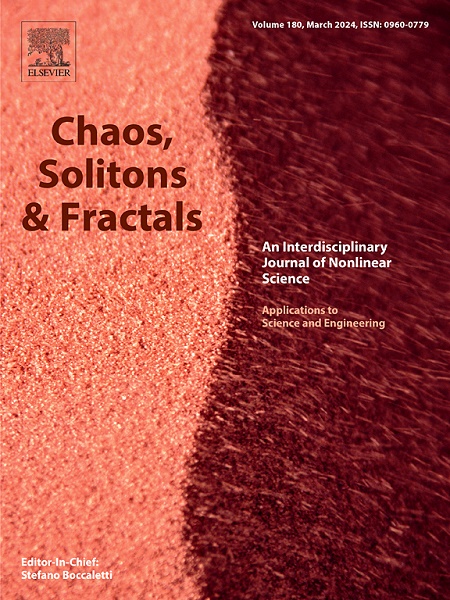Nonlinear design of tuned inertia damper: From analytical calculation to chaotic behavior prediction
IF 5.3
1区 数学
Q1 MATHEMATICS, INTERDISCIPLINARY APPLICATIONS
引用次数: 0
Abstract
In this study, a tuning method based on a bi-objective optimization approach—focusing on displacement and kinetic energy—is proposed for the design of Tuned Inertia Dampers (TIDs) for coupled linear and nonlinear primary systems. For the nonlinear primary system, the design criteria for the TID parameters are established through an analytical method, and the analytical expression for the steady-state frequency response of the nonlinear system is derived using the harmonic balance method (HB). A dimensional reduction analysis of the two-degree-of-freedom system is conducted, and the chaotic threshold is calculated by applying Melnikov function theory. The suppression effect of the TID parameters on the system's chaotic behavior is further verified through numerical simulations of the safety basin. Building upon this, a tuning strategy is developed with the goal of optimizing the balance between the peak displacement and kinetic energy responses of the primary system. The dynamic correlation between the optimal stiffness of the TID, the nonlinear stiffness coefficient of the primary system, and the inertia element is also explored. This method offers a design framework that combines both analytical accuracy and engineering applicability for nonlinear vibration control, particularly for structural systems with viscoelastic materials or large deformation characteristics.
调谐惯性阻尼器的非线性设计:从解析计算到混沌行为预测
本文提出了一种基于位移和动能双目标优化方法的调谐惯性阻尼器设计方法,用于线性和非线性耦合主系统。对于非线性主系统,通过解析方法建立了TID参数的设计准则,并利用谐波平衡法(HB)推导了非线性系统稳态频率响应的解析表达式。对二自由度系统进行降维分析,应用Melnikov函数理论计算混沌阈值。通过安全池的数值模拟,进一步验证了TID参数对系统混沌行为的抑制作用。在此基础上,开发了一种调谐策略,其目标是优化主系统的峰值位移和动能响应之间的平衡。探讨了TID最优刚度、主系统非线性刚度系数与惯性单元之间的动态关系。该方法为非线性振动控制提供了一种结合分析精度和工程适用性的设计框架,特别是对于具有粘弹性材料或大变形特性的结构系统。
本文章由计算机程序翻译,如有差异,请以英文原文为准。
求助全文
约1分钟内获得全文
求助全文
来源期刊

Chaos Solitons & Fractals
物理-数学跨学科应用
CiteScore
13.20
自引率
10.30%
发文量
1087
审稿时长
9 months
期刊介绍:
Chaos, Solitons & Fractals strives to establish itself as a premier journal in the interdisciplinary realm of Nonlinear Science, Non-equilibrium, and Complex Phenomena. It welcomes submissions covering a broad spectrum of topics within this field, including dynamics, non-equilibrium processes in physics, chemistry, and geophysics, complex matter and networks, mathematical models, computational biology, applications to quantum and mesoscopic phenomena, fluctuations and random processes, self-organization, and social phenomena.
 求助内容:
求助内容: 应助结果提醒方式:
应助结果提醒方式:


